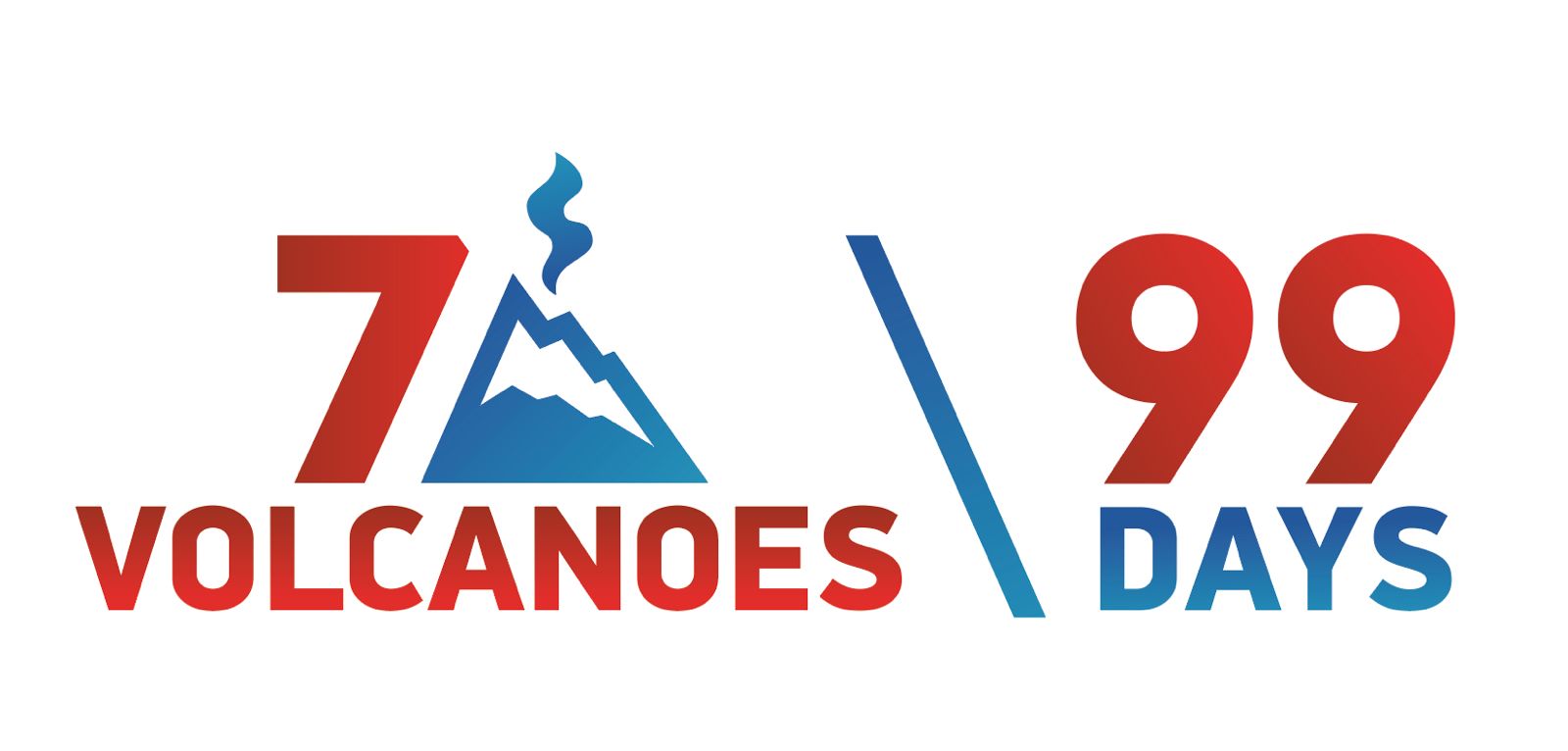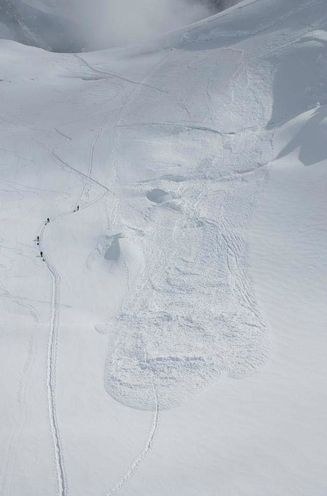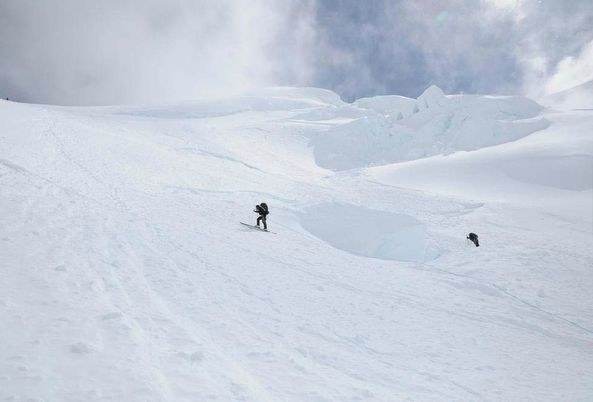Search called off for 4 climbers believed killed on McKinley
Japanese climbers believed to have died on McKinley glacier.
By KYLE HOPKINS. Anchorage Daily News. Published: June 17th, 2012 06:52 PM
Update: The search for four climbers presumed dead in an avalanche on MountMcKinley has been suspended, the National Park Service said Sunday.
"A two-day ground search of the debris path from afatal avalanche onMt.McKinleyhas been suspended after clues were found confirming the likely location of four deceased climbers," the Park Service said in a written statement.
"An aerial hasty search took place on June 14 followed by an initial four-member NPS ground search the following day. On Saturday, June 16, an expanded 10-person ground crew consisting of NPS rangers, volunteer patrol members, a dog handler, and a trained search and rescue dog probed and further investigated the debris zone.
"During the search, NPS mountaineering ranger Tucker Chenoweth descended into the same crevasse that the survivor Hitoshi Ogi had fallen into during the avalanche. While probing through the debris roughly 30 meters below the glacier surface, Chenoweth found a broken rope end that matched the MWAF team's rope. He began to dig further, but encountered heavily compacted ice and snow debris. Due to the danger of ice fall within the crevasse, it was decided to permanently suspend the recovery efforts."
Earlier story: Four Japanese mountain climbers are believed dead following an avalanche early Thursday morning onNorth America's tallest peak.
The 800-foot slide came at about 2 a.m. as the five-person team was roped together, descending a popular route down Mount McKinley, according to the National Park Service. Four of the climbers, all in their 50s and 60s, disappeared in the snow.
The lone survivor is a 69-year-old man who fell about 60 feet down a crevasse -- a deep crack in the ice -- but scrambled to safety with no significant injuries.
"The rope had broken so he was separated from the rest of his team members," said Maureen McLaughlin, a Park Service spokeswoman in Talkeetna.
The slide appears to be the most deadly single accident on the mountain since four Canadian climbers were killed in a 1992 fall high on the mountain, according to Park Service records.
The avalanche began at about 11,800 feet, according to the Park Service. It was about 200 feet wide, piling roughly three to four feet of snow and debris on the glacier, McLaughlin said.
The survivor, Hitoshi Ogi, was the last climber on the rope line and the highest on the mountain when his friends vanished. He walked and climbed to the surface of the crevasse following the fall, McLaughlin said. When he found no sign of his companions he spent much of the day making his way another 4,600 feet down the mountain reporting the accident at the Kahiltna base camp shortly after 4 p.m.
"I don't know if he had a radio. He lost quite a bit of his gear in the crevasse," McLaughlin said.
"His hand was wrapped up and I'm not sure if that was frostbite or injury," she said.
A subsequent aerial search by Park Service rangers that evening found no sign of the missing climbers or their gear.
A team of about 10 searchers, including an avalanche rescue dog named Sisu, was on the mountain Saturday looking for the remains of the other four climbers, McLaughlin said. They are presumed dead because of the time that has passed since the slide.
The missing climbers, two men and two women, were identified as:
• Yoshiaki Kato, 64
• Masako Suda, 50
• Michiko Suzuki, 56
• Tamao Suzuki, 63
All are from Miyagi Prefecture,Japan, and members of a Japanese alpine club called Miyagi Workers Alpine Federation. McLaughlin said she did not know if Michiko Suzuki and Tamao Suzuki were husband and wife.
The Consular Office of Japan inAnchorageworked to provide information to the climbers' families following the accident, an official with the office said Saturday.
All five mountaineers appeared to be making their first attempt to climb the 20,320-foot peak, according to the Park Service. Some of the group listed prior experience on peaks such as Kilimanjaro andMount Fuji, McLaughlin said.
The climbers were descending an area known as Motorcycle Hill on the main route ofMountMcKinley's West Buttress
"It's about a 35-degree slope, just a gradual climb. Generally snow and ice fields," McLaughlin said.
While not a particularly treacherous portion of the climb, the area is "prone to some avalanche activity," she said. McLaughlin was not aware of any previous avalanche deaths in the area.
Another slide was reported earlier in the week higher on Denali, at about 15,500 feet, she said. That avalanche resulted in injuries but no deaths.
On McKinley, falls kill climbers far more often than snow slides, according to Park Service records. Descents high on the mountain are particularly deadly, said Daryl Miller, a retired mountaineering ranger who worked in the area for 17 years.
So far this season, 234 people have reported reaching the 20,320-foot summit. The weather recently turned against mountaineers, however, and Park Service officials assume the Japanese expedition did not summit.
Winds of 25 to 45 mph and cumulative snowfall of about two feet over the past week or two has thwarted climbers' attempts to reach the mountaintop, McLaughlin said.
"The same rough weather conditions led to the avalanche conditions," she said. Overall, the weather was not unusually bad for Denali and began to clear up on Thursday, McLaughlin said.
Including the Japanese climbers, six people have died on Denali this season.
A Finnish mountaineer skiing down a 40- to 45-degree slope called The Orient Express died May 23 after tumbling 2,000 feet. The 36-year-old landed in a crevasse at 15,850 feet, according to the Park Service.
On May 18, a climber fell more than 1,000 feet to his death after trying to grab a sliding backpack at about 16,200 feet.
The Japanese expedition began its climb on or about May 26, according to the Park Service. The average expedition takes about 17 or 18 days, she said.
The climbing season on Mount McKinley peaks in late May and early June, she said. As of Saturday, there were 395 climbers on the mountain. Most are on the West Buttress route.






